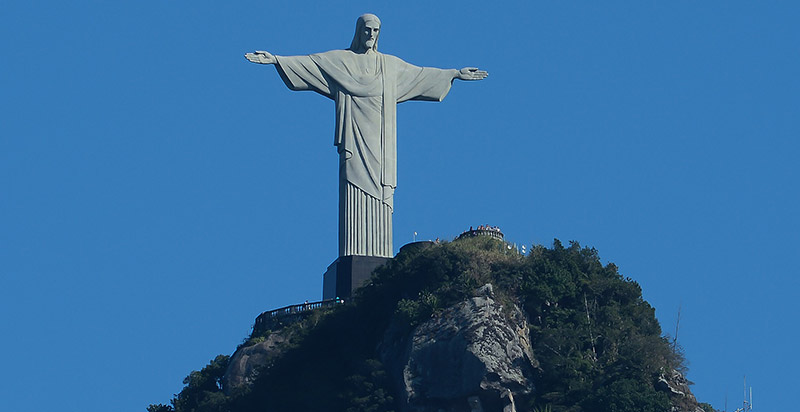Christ the Redeemer is a sculpture of Jesus Christ in Rio de Janeiro, Brazil; considered the biggest Art Deco sculpture on the planet and the fifth biggest sculpture of Jesus on the planet. It is 39.6 meters (130 ft) tall, including its 9.5 meters (31 ft) platform, and 30 meters (98 ft) wide. It weighs 635 tons (625 long,700 short tons), and is situated at the pinnacle of the 700-meter (2,300 ft) Corcovado mountain in the Tijuca Forest National Park sitting above the city. An image of Brazilian Christianity, the sculpture has become a symbol for Rio de Janeiro and Brazil. It is made of built up cement and soapstone, and was developed somewhere in the range of 1922 and 1931.
Planning a monstrous sculpture of Jesus Christ in Rio initially returned about path during the 1850s, when a nearby cleric concocted putting a Christian landmark on top of Mount Corcovado. Clearly he had mentioned Princess Isabel (the little girl of Emperor Pedro II and Princess Regent of Brazil at that point), to subsidize the task, however the thought was rejected after a Declaration of the Republic was pronounced in Brazil in 1889 – an apex move as it isolated the congregation from the state in the country.
It wasn't until after World War I when the Roman Catholic archdiocese in Rio and a gathering of local people began getting worried about the "absence of strict confidence" in the Brazilian people group, and it was trusted that by setting a monstrous sculpture of Jesus on top of a mountain in Rio, it would oppose what they saw as an "expanding atheism" in the country. It was mentioned that the sculpture be set on the highest point of Mount Corcovado so it would be obvious from anyplace and wherever in Rio, and subsequently address a method of "recovering Rio" (which was Brazil's capital city around then) to Christianity.



Post a Comment